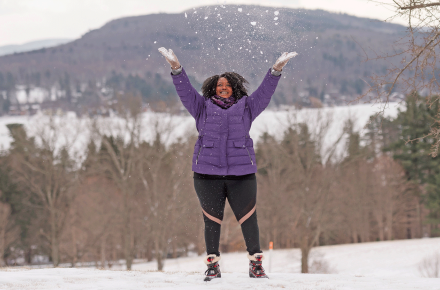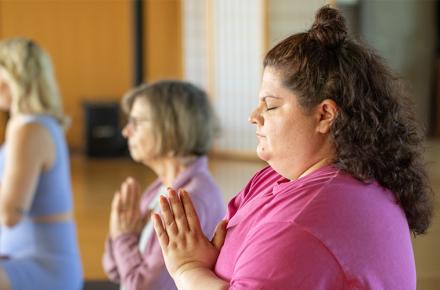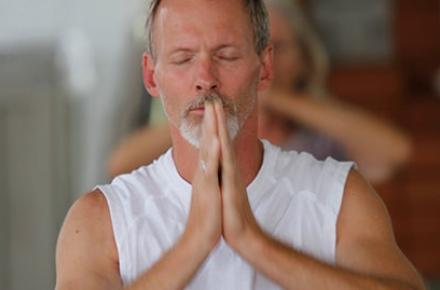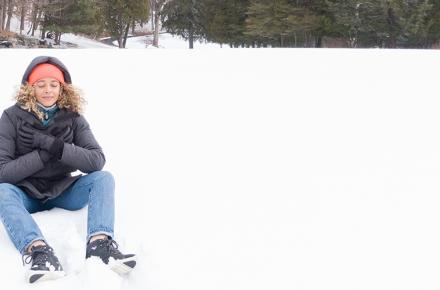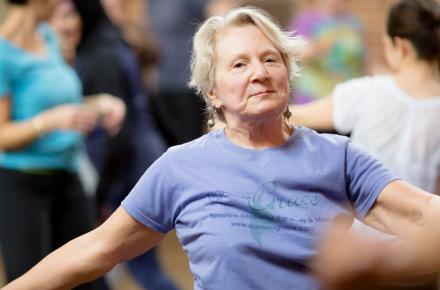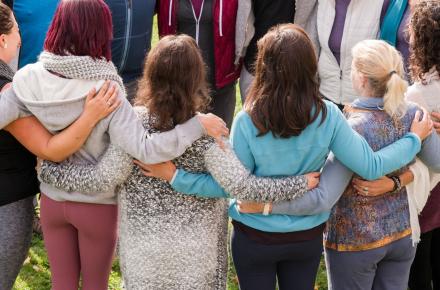Secrets of Sourdough from the Kripalu Bakery

by Tresca Weinstein
Ask Daniel Dillon, Kripalu’s Bakery Supervisor, about baking bread, and the conversation will expand—like a particularly lively sourdough starter—to encompass history, chemistry, and yoga. In less than the time it takes for dough to rise, he can cover the time-temperature-water formula for keeping bread “happy,” the difference between East Coast and West Coast starters, and why baking is like being on the yoga mat, while casually mixing in Pliny the Elder’s recipe for Roman raisin bread, obscure fermentation terminology like “poolish” and “biga,” and the fact that Marie Antoinette has been perpetually misquoted. (What she really said was “Let them eat brioche.”)
Daniel came to Kripalu in 2018 after spending many years baking in North Carolina, followed by five and a half years in Richard Bourdon’s Berkshire Mountain Bakery in nearby Housatonic, Massachusetts. Berkshire Mountain Bakery also happens to be the origin of Kripalu’s own sourdough starter, which Bourdon shared with the center’s bakers back in 1986, just three years after Kripalu was established in Stockbridge. All of our sourdough loaves—including the cinnamon raisin, semolina, oatmeal, garlic rosemary, whole grain, sesame, and classic San Francisco—come from that original gift. So does Kripalu's Mocha Cake, which owes its soft, tangy crumb to the magical alchemy.
“We don’t use commercial yeast at all—all the leavening is sourdough,” Daniel says. “It’s kind of like taking the training wheels off a bicycle: Commercial yeast is stable and predictable, and sourdough is more of a wild ride—it all depends on the barometric pressure and humidity that day.”
The Mother of All Loaves
Reaching into one of the many coolers lining the walls of the Bakery, Daniel pops open the lid of a plastic bucket containing the smooth, stretchy starter, pocked with tiny bubbles. It smells sharp and fresh, like vinegar and sour cream. He feeds it every day with flour and water, making new batches several times a week that each retain a bit of the original starter—like an ember being carried from one fire to the next.
Though some bakers add grape leaves, apples, or yogurt, flour and water are all you really need to make a starter, Daniel says, and the recipe is simple: Mix and wait, until the yeast microbes in the air start to interact with the bacteria in the mixture. “If the temperature and hydration are within a certain zone—77 to 83 degrees Fahrenheit—the starter will become a living thing,” he says. As the yeast continues to feed on the flour, breaking down the starches into sugar, the fermentation process releases carbon dioxide gas. That’s what creates the airy holes in the crumb of a good sourdough loaf.
While many bakers (including Bourdon) make bread dough by adding flour and water directly to the starter, at Kripalu, Daniel mixes the dough first and then adds the starter—also known as “the mother”—afterward. That’s the way it’s always been done here, he says.
Dough in Flow
Each morning at 5:30 am, it’s time to make the dough, enough for 40 loaves. Then it’s left to prove (for those who aren’t yet addicted to the Great British Baking Show, proving means rising) for the next five hours, after which it goes into “suspended animation” in the fridge, to be baked the next morning.
“At any given time, we’re mixing, baking, and prepping for the next day,” Daniel says. “It’s a daily rhythm, where every day is connected.” You might think of it as a vinyasa of sorts—the Sourdough Salutation, maybe?
“The general principles of mindfulness and attentiveness are absolutely crucial in baking,” Daniel reflects. “There are so many details, and to master them, you have to be totally immersed in the moment and totally focused. To make happy bread, it takes a certain golden ratio of flour and water and salt.”
The salt, he says, affects the pH of the dough, so it can be used to help calibrate the perfect balance between alkaline and acidic. The Ayurvedic principles of treating imbalances with opposites and shifting with the seasons apply in bread-making as well as life—when the weather is warm, the water added to the dough needs to be cooler, and vice versa; on a rainy day, you don’t need as much water in the mix.
A Web of Life
Like people, dough is sensitive, and it can get stressed out quickly. “You can shock a dough pretty easily by over-mixing, adding too much starter, or throwing in the salt too soon,” Daniel says. “If you stress it out, it’ll get rips in it and look almost angry.” Happy bread, on the other hand, has a strong yet flexible web, also known as a windowpane. “The dough’s ready when you can take a piece, stretch it, and see the color of your fingers through the dough and it doesn’t break,” he explains.
No one has successfully created a gluten-free sourdough yet, Daniel says. (Kripalu does serve gluten-free sandwich bread from local bakeries at every meal, as well as gluten-free quick breads, pancakes, and desserts baked in-house with soy, oat, buckwheat, rice, coconut, or even green banana flour.) However, sourdough is thought to be a bit gentler on the system than other breads because of the enzymatic activity that breaks down the gluten. “Any kind of fermentation will help with digestion—for example, tempeh is easier to digest than tofu,” Daniel notes. “Sourdough corresponds well with Kripalu’s philosophy of food being a part of wellness.”
This ancient art also represents “one of the most timeless aspects of baking,” he says. “Fermentation and bread baking are inexorably linked.” He has plenty of examples: The ancient Egyptians scraped yeast from the bottom of beer barrels to make bread; hieroglyphics in the pyramids of Giza depict men feasting on round loaves. The Roman author Pliny the Elder recorded the recipe for a bread made with a spelt starter and pureed raisins that was later served to the workers building Hadrian’s Wall around 122 CE. (Daniel has tried it; he says the bread is purplish and tastes like wine.) In California, one of the oldest surviving starters arrived during the Gold Rush in the 1800s. As for the variations between starters made east and west of the Rocky Mountains, it’s all about the different microbes in the air, dating back to when the two halves of the country were separate continents.
But while Daniel appreciates the history of sourdough, ultimately, “it’s all about the taste and texture,” he says. “You can’t get that with any other bread.”
Tresca Weinstein is Features Editor at Kripalu.
Sample more videos, recipes, and articles.
© Kripalu Center for Yoga & Health. All rights reserved. To request permission to reprint, please email editor@kripalu.org.

























